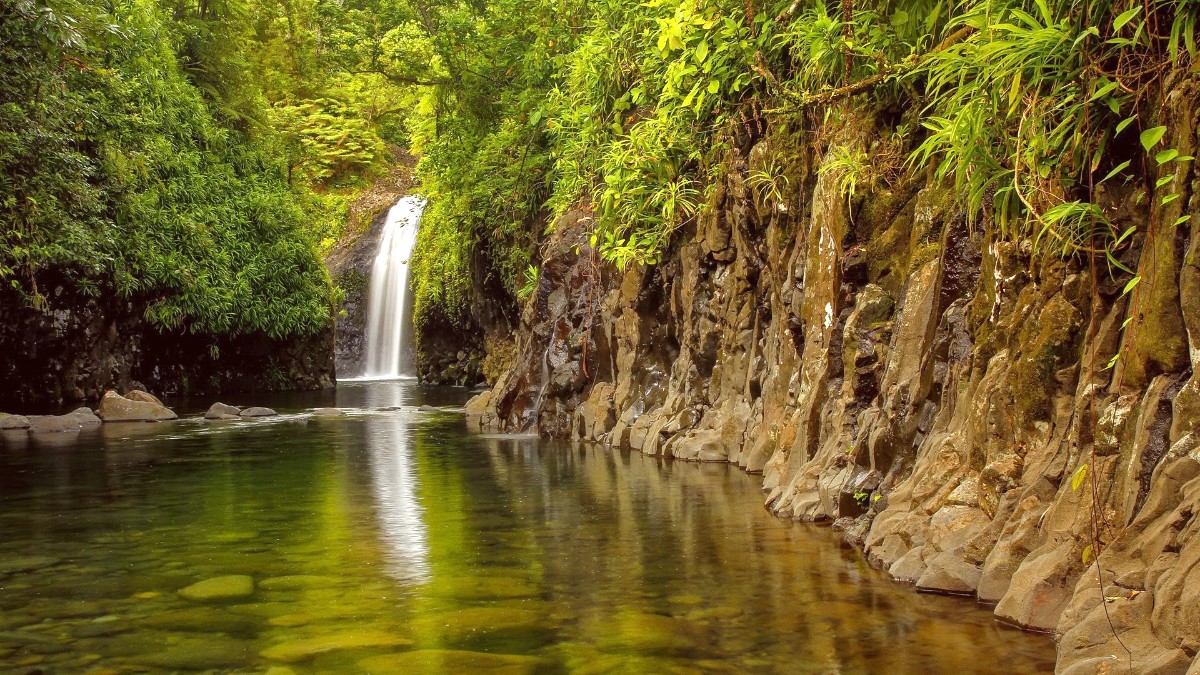
Fiji
Traditional Fijian cooking centers on simplicity and local produce. Dishes cooked in a "lovo" (earth oven) or simply boiled or steamed. Coconut milk (lolo) is a staple, used in many savory and sweet dishes. Fish and seafood form a large part of the diet, reflecting the island's ocean bounty. Root crops like taro, cassava, and kumala provide the starchy base for most meals.
The arrival of Indian indentured laborers brought curries and spices, while Chinese immigrants introduced stir-fries and noodle dishes, enriching the local palate over time.
Dalo (taro), tavioka (cassava), kumala (sweet potato), breadfruit, yams. Proteins include fresh fish (tuna, mahi-mahi), various seafood, chicken, and pork.
Coconut milk (lolo) pervasive. Ginger, garlic, chili, lime, and onion provide common flavor profiles. Seaweed (nama) sometimes contributes an unique taste.
Lovo (earth oven cooking) imparts a smoky flavor. Boiling, steaming, and grilling are also common preparation methods.
Traditional Fijian feast with meats, fish, and root crops cooked on hot stones for several hours.
The result is tender, smoky, and delicious food. Resorts often offer as a special event.
Fresh raw fish (mahi-mahi or snapper) marinated in lime/lemon juice until "cooked" by the acid.
Mixed with coconut milk, diced tomatoes, onions, chilies. Refreshing, popular for tropical climate.
Palusami: Taro leaves (rourou) baked with coconut milk, often with corned beef or fish. Ika Vakalolo: Fish cooked in coconut milk with vegetables.
A creamy and savory side dish. A simple, healthy, and flavorful fish preparation.
Sweetened grated cassava baked with coconut milk. A popular dessert.
Tropical fruits like pineapple, mango, papaya, passionfruit, and bananas are abundant and make for healthy snacks or desserts.
Typically found within luxury resorts. Curated menus, often international fusion cuisine with high-quality local ingredients.
Many resorts offer mid-range dining. These restaurants balance quality and value, providing varied menus.
Somosomo Market: The best place for fresh produce and sometimes simple, prepared local snacks. Assemble your own meal.
Generally good, specifically at resorts. Fijian cuisine naturally uses many root crops, vegetables, and coconut milk.
Clearly communicate your dietary needs in advance. "Au sega ni kana lewe ni manumanu" (I don't eat meat). Resorts usually accommodate. Consider Allergy cards.
Halal: Formal options limited. Seafood and vegetarian options are safest. Kosher: Extremely limited. Travelers with strict Kosher diets plan to self-cater and bring specific products.
Inform staff of severe allergies. Communication might be challenging in very local eateries.
Some resorts offer Fijian cooking demos.
Tours of plantations (coconuts, vanilla, taro).
Traditional earth oven feast.
Romantic private dinners on the beach.
Taveuni's fertile soil supports coffee. Explore small local plantations.
Taste locally grown and roasted coffee.
Roadside stalls sometimes sell seasonal fruits or simple cooked snacks.
Offers authentic local flavors.
Consider taking a cooking class if your resort offers one. This provides a fun way to learn about Fijian ingredients and preparation.
Visit Somosomo Market on a Saturday morning. It provides a understanding of local life and culture.
Luxury resorts offer curated menus with international fusion cuisine.
Many resorts provide varied menus, balancing quality and value. Matei has The Dive Cafe or Tramonto.
Somosomo Market for fresh produce and snacks. Local cafes in villages sell simple cooked meals.
Experience a traditional earth oven feast (Lovo) for a cultural and culinary immersion. Some resorts offer informal cooking demonstrations.
Learn to prepare dishes like kokoda or palusami.
Explore local spice or coconut farms. Visit Somosomo Market on a Saturday morning for an excellent self-guided food experience.
See and sample fresh local produce and engage with vendors.
Tipping is not customary in local eateries. At resorts, use a communal staff tip box if you wish to show appreciation.
Certain fruits are seasonal (e.g., mangoes typically appear during the wet season). Lovo feasts are common during celebrations.
Supporting local eateries and markets directly aids the island's communities and local economy.
Always confirm operating hours and availability, especially for smaller local establishments.